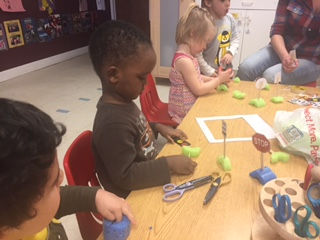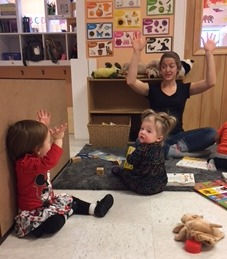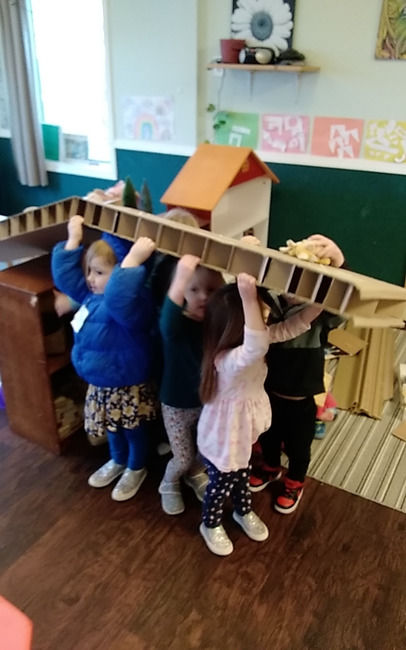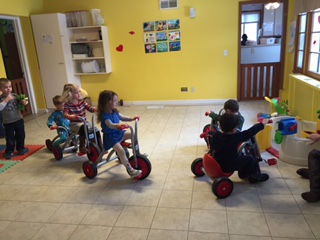The argument against children standing in a line
- bblcmadison
- Sep 19, 2023
- 4 min read
Updated: Sep 26, 2023
Ok, so I know I might get some hate for this one because I know it is a “go to” for a lot of teachers, but, having been in early childhood classrooms for almost 20 years now I just don’t see the point and it is one of my biggest “pet peeves”.
I know one argument for standing in a straight line is so that teachers can accurately count all the children and have proper sight supervision before moving to another physical space, like outside. But let’s get real here, you can easily figure out another way to see all the children accurately without making them stand in a straight line. This is just such an unnatural state for young children to be in, especially for anything more than 5 seconds. Also, this leads to power struggles over who is the leader and who is in front of who and who cut….and is it really worth all that just for a straight line??? I don’t think so. Plus, as soon as you open the door children will disengage from the straight line and the last 8 minutes or so that you fought to make a straight line is all for naught. So…… say good-bye to the straight line and instead let children transition to a new space in a way that is right for them and safe for you!
Ok, now those darn marks/spots on the floor!
So I understand that during the times of CO-VID this was a necessity to keep everyone safely 6 feet from each, but those times are over, and truthfully, this practice in early childhood classrooms existed way before CO-VID began. So, again the argument of having a specific place to wait for their turn for the sink or the bathroom is so that they learn to respect each other’s space and they don’t start fighting each other while they wait. But the answer isn’t to have them wait on “cute” little spots on the floor, the answer is to not have them wait at all.
So, what are some alternatives to standing in line or making them wait in marked spots? Try some of these:
Alternatives for standing in a line:
1. Have them sit at the table with an activity until everyone is ready to transition
2. Have them sit on a special pillow or carpet square that is designated just for them to use throughout the room
3. Have them sit in another easily identifiable area (cubby, nap mat)

Sitting at a table with desirable materials is much more fun than waiting in line. Don't worry about leaving the materials on the table when the class is outside. They will be waiting for the children when coming in and will make that transition easier too!
These techniques should only be used when you are trying to move the whole group to another physical space and should only last a handful of minutes. Be sure to use name- to- face and counting at several landmark places during the transition.
4. Also, do I dare suggest it, just have them clump up at the door. You can count and see them in a clump! Any maybe, just maybe, they will self-regulate and learn something about physical and personal boundaries.
Alternatives for standing in a designated spot while waiting their turn:
Don’t require them to all use the bathroom or sink at the same time! When something like this might happen, such as a meal time, use a phrase like “When you are ready for breakfast come wash your hands” instead of calling them all at the same time. By allowing them to choose when to end play and eat you will automatically stagger them. Now if they all rush at once to the sink because they are starving, then you deal with it and pull out your handy “transition techniques toolbelt” to help them get through the wait. (Use also might want to consider moving up your meal time a little earlier 😊)

Singing songs with motions is a great go-to transition technique to make waiting more fun!
The only time that I can really see the above technique not working is when you are bringing a class in from outside and they are all required to wash their hands upon entering the classroom. But even with this instance you can still get creative to prevent them from having to stand waiting for their turn, again, bring out that trusty “transition technique toolbelt” and I am sure you will find a way to make it happen for you and your class.
We spend so much of our time waiting in life and standing in line that surely we can save our youngest from this tedious task.
Trust me, children will learn to wait patiently in line. They will get enough practice once they hit elementary school, but let’s remember this wise nugget of information:
“We don’t give car keys to 13 year olds because they will need them when they are 16”.
Same theory applies here. It is not developmentally appropriate to make young children stand in line or on designated spots. If you have “successfully” implemented it in your classroom then all the children have learned is compliance.
I have witnessed more times than I can count where children self-organize into a line because they are motivated by an activity. This self-directing for the “standing in line” skill stems from empowerment not compliance, which, is, by far, the better motivator.

Children self directing into a line to carry a large cardboard piece together

Children self organized into this line of bikes
.png)


Comments